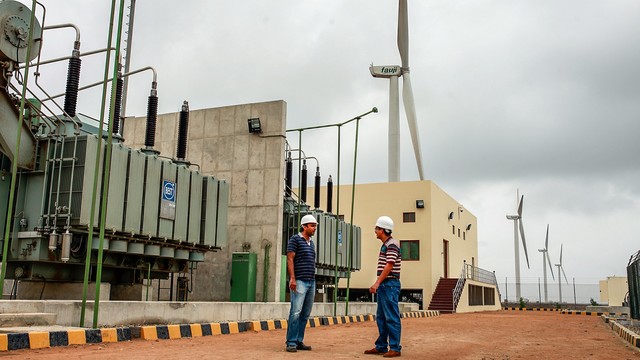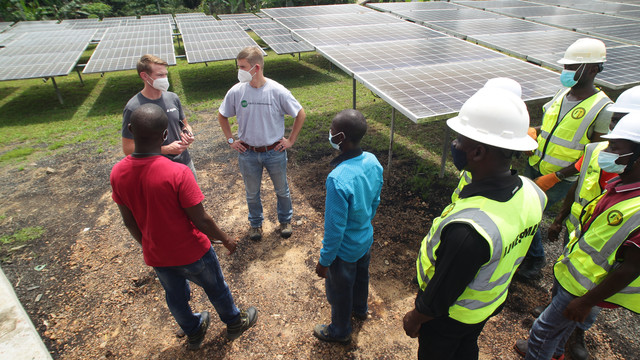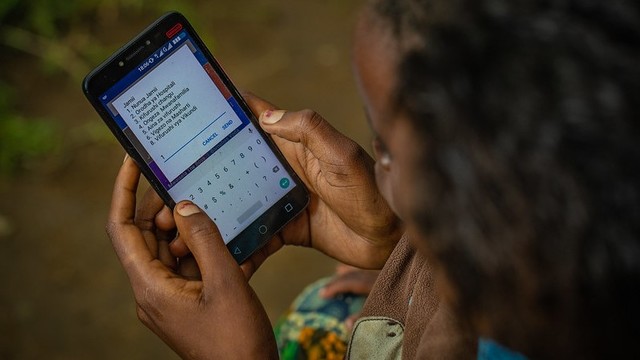Off-grid energy powered by the crowd
Crowdfunding provides a potential source of funding to improve access to electricity in countries such as India, but financial regulations are a barrier.


A vendor in India uses energy produced by a micro-grid funded by SunFunder (Photo: Sameer Halai/SunFunder)
How can the power of an immense crowd deliver sustainable energy access? Different models of crowdfunding are being used successfully to promote the uptake of renewable energy.
In California, equity-based crowdfunding developed by Mosaic has boosted the solar market in the past few years; similarly in the UK, the investment-based model of Abundance Generation raised more than £6 million from 1,200 investors, offering a five to nine per cent return.
In developing contexts, due to regulatory and legal barriers, donation-based crowdfunding is the common rule. Countries with low rates of access to energy, such as Tanzania and Uganda, have implemented small plants producing decentralised energy, generated in micro-grids (ie small-scale distribution networks) funded by companies such as SunFunder. These projects are feasible due to the contributions of thousands around the globe.
When it comes to India, the need for private funding for energy is patent. Ambitious goals set by the Government of Narendra Modi urge diversifying funding mechanisms to expand electricity to remote areas. The Energy Policy 2015-2022 sets a target of 170 GW from renewable sources, with specific goals for Solar-PV of 100GW and 60GW of wind power by 2022. Can crowdfunding help to achieve what previous policies haven't?
Current financial approach
Many barriers for small players still remain. Existing funding mechanisms for micro-grids are mainly financial institutions with high interest rates: micro-finance institutions charge 18-29 per cent interest for three-year period loans; co-operative banks (offering rates close to the 15 per cent) and regional rural banks (whose rates are about 12-13 per cent) are also providing loans for micro-grids.
Crowdfunding, properly used, is an alternative to decentralised funding mechanisms from institutions with high interest rates, reducing rates to approximately four per cent, by lowering the initial debt.
Crowdfunding for micro grids
Different actors in the solar field require funding: local entrepreneurs need to purchase diverse solar household appliances, such as lanterns and cook-stoves, to rent them on a daily basis; on a bigger scale, solar enterprises are seeking to implement micro-grids to provide electricity for entire villages.
Since these projects focus on the poorest, returns of investment might not be as fast as banks expect. Donation or lending-based crowdfunding provides more accessible options to fund relatively cheap projects that can pay back the investors within a one-to-three-year period. Loans for micro-grids have lower costs and risks for investors, and can be repaid by the borrower's avoided cost of alternative energy (commonly kerosene).
Some platforms (Milaap, SunFunder, Kiva and RangDe) are focusing their efforts on assisting local entrepreneurs and collecting funds for solar projects, while struggling against several barriers imposed by regulators for receiving foreign capital. Enabling a proper environment to scale up this type of investment appears to be urgent.
Barriers to overcome
The case of Milaap is typical. Based in Bangalore, this private social enterprise was launched to fund "unconventional essential service loans, such as energy lending" (PDF).
Milaap has included foundations and other private donors as investors in its projects. But to successfully attract foreign donors and lenders, current regulations in India need to present fewer obstacles to return loans or accept donations.

Regarding loans, the Security and Exchange Board of India (SEBI) regulations do not allow fundraising from the public promising a return of investment, unless the company goes "through the complicated and costly procedure of listing on a stock exchange".
This issue makes crowdfunding platforms unable to offer any type of earned interest to their investors, and so only philanthropic incentives are offered to potential funders. Lenders assume the risk that repayments may be delayed due to regulatory barriers to transferring funds out of India, which adds to the uncertainty as to whether they will be repaid.
For donations, the rules contained in the Foreign Contribution Regulation Act (FCRA) require dynamism to promote foreign loans. Not-for-profit organisations that have existed for less than three years cannot legally receive contributions from any donor outside of India until they register (a 90-day process that requires payment of a fee) and apply for "prior permission" to accept donations from overseas.
Conclusions
If results are to be achieved, it seems undeniable that the public and private sector have to complement each other. The public sector has to be capable of stimulating private funding by offering incentives, risk-guarantees and a proper regulatory framework for investment.
The current scenario shows the clear need for more flexible regulations regarding crowdfunding, private donors and foreign lenders – all key actors to achieving energy access goals.
The power of "the crowd" is immense; but as mentioned in the financing energy access workshop hosted by IIED last November, funding is one of many key success factors – "including different finance, regulatory and other support measures across different markets". Strict regulation for foreign contributions given to not-for-profits needs to be more dynamic.
Understanding the importance of crowdfunding as a financial mechanism for off-grid electricity is key for informed recommendations to policymakers to amend the current regulation, and so achieve electrification goals.
Boris Lopicich (balopici@uc.cl) is managing director at the NGO Innovation, Development and Equity in Santiago, Chile, and a consultant with IIED's energy team. Follow him on Twitter: @borislopicich
About the author




